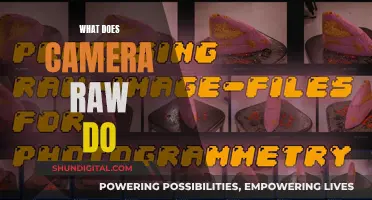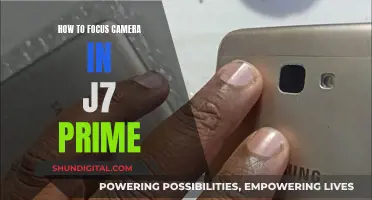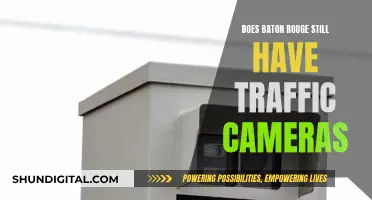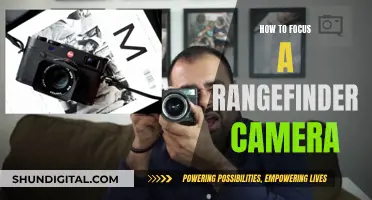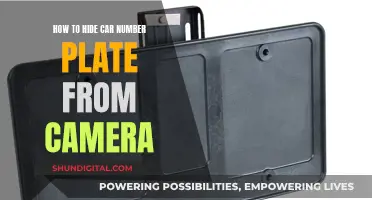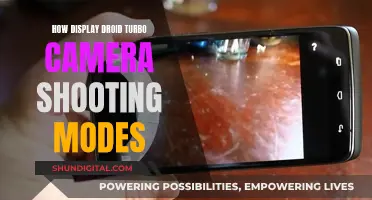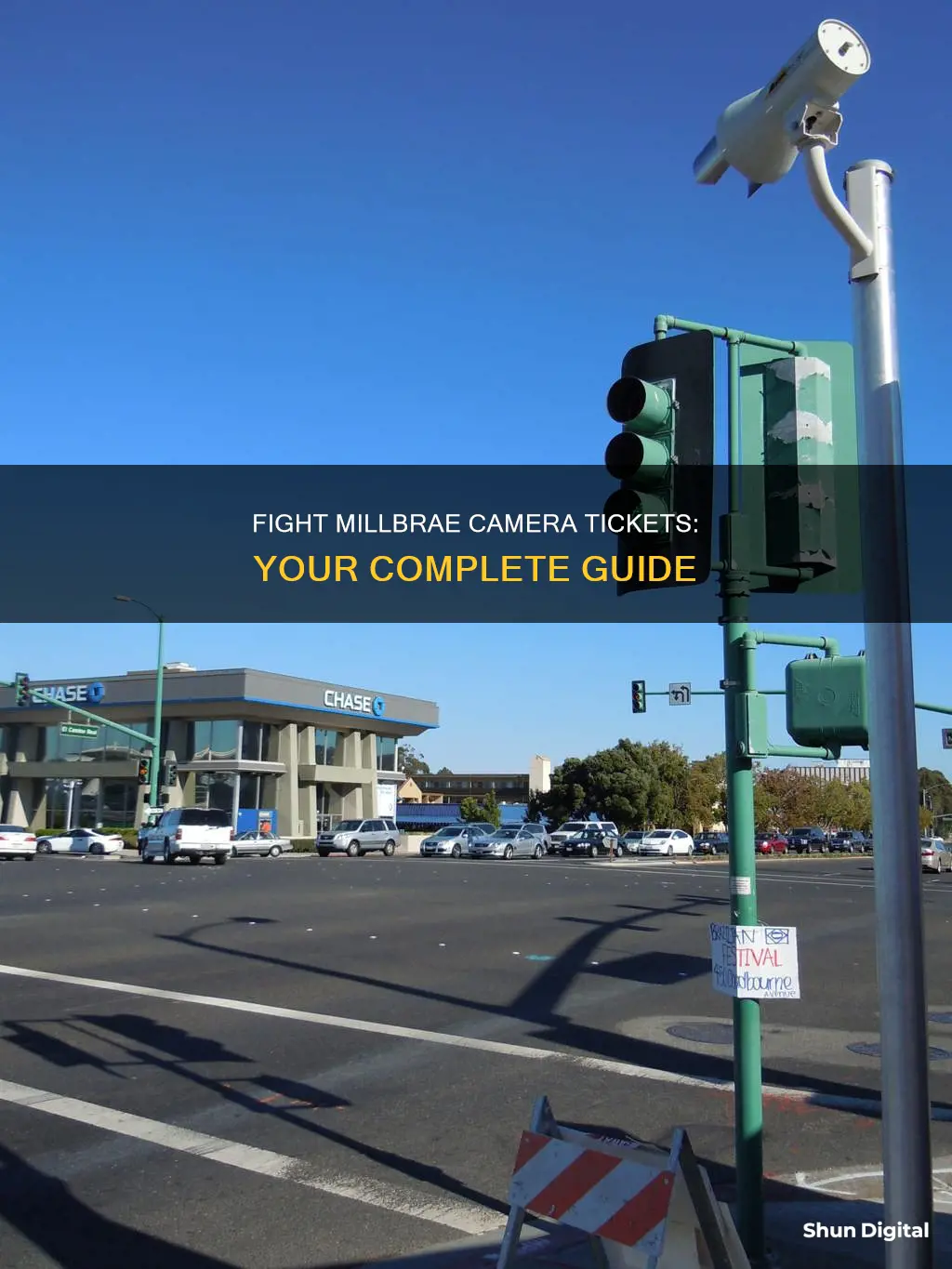
If you've received a camera ticket in Millbrae, you may be wondering if it's possible to contest it without going to court. The good news is that it is possible to fight a camera ticket through a trial by written declaration, and there are services available that can help increase your chances of success. These services can assist in preparing the necessary documents and forms, and provide guidance on the best course of action to take. It's important to note that camera tickets can have significant financial implications, with fines often costing $490 or more, not to mention the potential impact on your driving record and insurance premium. However, with the right approach and assistance, you may be able to get your ticket dismissed and avoid these costly consequences.
What You'll Learn

Check if your ticket is real or a snitch ticket
If you've received a red light camera ticket in Millbrae, it's important to first check if it's a real ticket or a "snitch ticket". A snitch ticket is an investigative tool used by the police to identify the driver who violated the red light statutes. It is not a real ticket and can be ignored. Here are some ways to determine if your ticket is a snitch ticket or a real ticket:
- Check the source of the ticket: Snitch tickets typically come directly from the police station or office, while real tickets are issued by the court. Look for the court's name and address on the ticket.
- Due date and summons: Snitch tickets usually do not have a due date or a summons stating that you must pay or appear by a certain date. Real tickets will have specific deadlines and instructions on how to respond.
- "Notice to Appear": Real tickets often include wording such as "Notice to Appear" or "Respond to", directing you to take action and contact the court. Snitch tickets will have wording such as "This is Not a Ticket" and may instruct you not to contact the court.
- Court information: Real tickets should include the court's phone number, address, and other relevant information. However, some cities may intentionally leave out this information to make it harder to fight the ticket. Snitch tickets may also have incomplete or missing court details, so the absence of this information is not always a definitive indicator.
- Courtesy Notice: If you receive a Courtesy Notice from the court, asking you to contact them regarding your ticket, it is likely a real ticket.
- Photo placement: The placement of the photos on the ticket can also be an indicator. Snitch tickets typically have the four photos arranged at the bottom of the page, while real tickets usually have the photos in a column on the right side of the page.
Remember, snitch tickets are not filed with the court and have no legal weight. You have the right to remain silent and do not need to respond to a snitch ticket. On the other hand, real tickets should not be ignored as they can result in fines and other consequences.
Charging Camera Batteries: Full Drain or Frequent Top-Ups?
You may want to see also

Challenge the ticket with a trial by written declaration
If you've received a red light camera ticket in Millbrae, you may be able to challenge it using a trial by written declaration. This process allows you to dispute the ticket without having to appear in court. Here's a step-by-step guide on how to challenge your ticket through a trial by written declaration:
Step 1: Understand the Process
The trial by written declaration is a legal process that allows you to challenge your traffic ticket in writing. You will need to submit a written statement explaining your side of the story and providing any relevant evidence. The judge will then review your statement, along with a statement from the law enforcement officer who issued the ticket, and make a decision. If you are found not guilty or the fine is lowered, the court will refund any money you have paid.
Step 2: Obtain the Necessary Forms
You will need to fill out and submit specific forms to the court to initiate the trial by written declaration process. The required forms may vary depending on the court handling your ticket, but generally, you will need to submit the "Request for Trial by Written Declaration" form (form TR-205). If you need more space for your written statement, you can use the "Attached Declaration" form (form MC-031). These forms can typically be found on the court's website or the Notice of Trial by Written Declaration that you received from the court.
Step 3: Gather Evidence
In addition to your written statement, you can also submit evidence to support your case. This may include photographs, witness statements, or any other relevant documentation. If you are submitting photographs or diagrams, be sure to explain what they depict in your written statement. Witness statements should be signed and include the words, "I declare under penalty of perjury under the laws of the State of California that this statement is true and correct."
Step 4: Submit Your Forms and Evidence
Once you have completed the necessary forms and gathered your evidence, you will need to submit them to the court by the due date specified on the Notice or ticket. You can usually mail in your forms and evidence, or in some courts, you may be able to submit them online. Remember to include any required fines or bail amounts with your submission.
Step 5: Await the Court's Decision
After submitting your forms and evidence, the court will review your statement along with the statement from the issuing officer and make a decision. If the judge finds you not guilty or reduces the fine, the court will refund your money. You will typically receive a letter from the court informing you of the decision.
It's important to note that the trial by written declaration process may vary slightly depending on the specific court handling your ticket. Be sure to follow the instructions provided by the court and reach out to them if you have any questions or concerns.
Waylens Camera: Exploring USB Mode Functionality
You may want to see also

Check the minimum yellow clearance time for the traffic signal timing
The minimum yellow clearance time for traffic signal timing is determined by the speed limit of the street. According to the California Manual of Traffic Control Devices, the City of Millbrae is required to adhere to the standards adopted by California when designing its red light camera enforcement system.
The speed limit on Millbrae Avenue is 35 mph, which corresponds to a minimum yellow clearance time of 3.6 seconds. On the other hand, the speed limit on US 101 Southbound is 25 mph, resulting in a shorter minimum yellow clearance time of 3 seconds.
These minimum yellow clearance times are crucial for ensuring that drivers have sufficient time to react and adjust their speed or stop safely when approaching an intersection. Adhering to these standards helps maintain a balance between traffic flow efficiency and road safety.
Topping Off Camera Batteries: Is It Safe?
You may want to see also

Check for notification signage
When contesting a camera ticket in Millbrae, checking for notification signage is an important step. Here are some detailed instructions and considerations to help you through the process:
Firstly, understand the requirements for notification signage. In Millbrae, the City is required to adhere to specific standards when it comes to notifying drivers about the use of automated red-light enforcement systems. These standards are outlined in the California Manual of Traffic Control Devices, which dictates that drivers must be notified about the use of automated enforcement through signage at or near the intersection. This signage, known as SR-56 signage, should be placed in spots where they are clearly visible to drivers at all times.
Next, conduct a thorough inspection of the intersection where you received the ticket. Pay close attention to the placement and visibility of the SR-56 signage. Note that sometimes the signage may be posted right at the intersection, while other times it may be posted a significant distance before the intersection. Carefully observe the surrounding area, including any potential obstructions to the signage, such as tree branches or bushes. If there are any obstructions, be sure to take photographs as evidence.
If you believe the notification signage was not clearly visible or was obstructed, this could be a strong argument for contesting your ticket. However, it is important to remember that the City of Millbrae may have specific guidelines on the placement of these signs, so be sure to review their standards and compare them to your observations.
Additionally, consider seeking assistance from professionals who specialize in contesting camera tickets. They can guide you through the process, review your observations, and help you build a strong case. Their expertise can be invaluable in navigating the legal process and increasing your chances of a successful outcome.
Remember, when contesting a camera ticket, it is crucial to be thorough in your investigation and documentation. By carefully checking for notification signage and understanding the relevant standards and requirements, you can make a well-informed decision about your next steps.
GH5 Camera Battery Life: How Long Does It Last?
You may want to see also

Prepare your documents for a trial by written declaration
If you have received a red light camera ticket in Millbrae, you can opt for a trial by written declaration to contest it. This means you won't have to appear in court and can instead submit your defence in writing. Here is a step-by-step guide to prepare your documents for a trial by written declaration:
- Obtain the Necessary Forms: You will need to fill out specific court forms to request a trial by written declaration. The required forms include the "Request for Trial by Written Declaration" (form TR-205) and the "Attached Declaration" (form MC-031) if you need more space for your statement. These forms can be obtained from the court handling your ticket or their website.
- Gather Evidence: Collect any evidence that supports your case. This can include photographs, diagrams, or witness statements. If you are submitting photographs or diagrams, ensure you explain what they depict in your written statement. For witness statements, use the Attached Declaration form (MC-031). If a witness does not use this form, their statement must be signed and include the words, "I declare under penalty of perjury under the laws of the State of California that this statement is true and correct."
- Prepare Your Written Statement: In your written statement, explain clearly and concisely what happened and why you are contesting the ticket. Be sure to address any relevant details or circumstances that support your case. If you are including evidence, refer to it in your statement and explain how it supports your defence.
- Complete the Forms: Fill out the "Request for Trial by Written Declaration" form (TR-205) and attach your written statement and any evidence. If you need more space for your statement, use the "Attached Declaration" form (MC-031). Ensure all forms are filled out accurately and completely.
- Make Copies: Before submitting, make copies of all your completed forms and evidence for your records. It is always a good idea to have a backup in case something gets lost in the mail or there are any issues with your submission.
- Submit by the Deadline: Send your completed forms, evidence, and any required payment to the court by the due date. You can usually mail your submission or submit it online, depending on the court's procedures. The court's website or the notice you received should provide instructions on how and where to submit your paperwork.
Remember, a trial by written declaration allows you to present your defence and any supporting evidence to the judge in writing. The judge will review your submission and the statement from the law enforcement officer who issued the ticket and then make a decision. If you are found not guilty or the fine is lowered, the court will refund any money paid.
Understanding Camera Raw Footage: Unlocking the Power of Raw
You may want to see also
Frequently asked questions
If your ticket does not have the San Mateo County Superior Court's name and address on it, it is a fake ticket, or a "Snitch Ticket". A real ticket will have four photos in a column on the right side of the page.
You can choose to challenge the ticket with a trial by written declaration, which does not require you to appear in court.
If your ticket is dismissed, you will receive a full refund of the bail amount. If you are found guilty, you can ask for traffic school and stop fighting the ticket, or you can request a new trial.
The average cost of a California traffic camera ticket is over $490, and insurance increases by around $272 per year for the next three years following a traffic camera violation. However, you have the right to fight the ticket with a trial by written declaration, which may result in no points on your record, a refund of bail money, and no increase in insurance.


